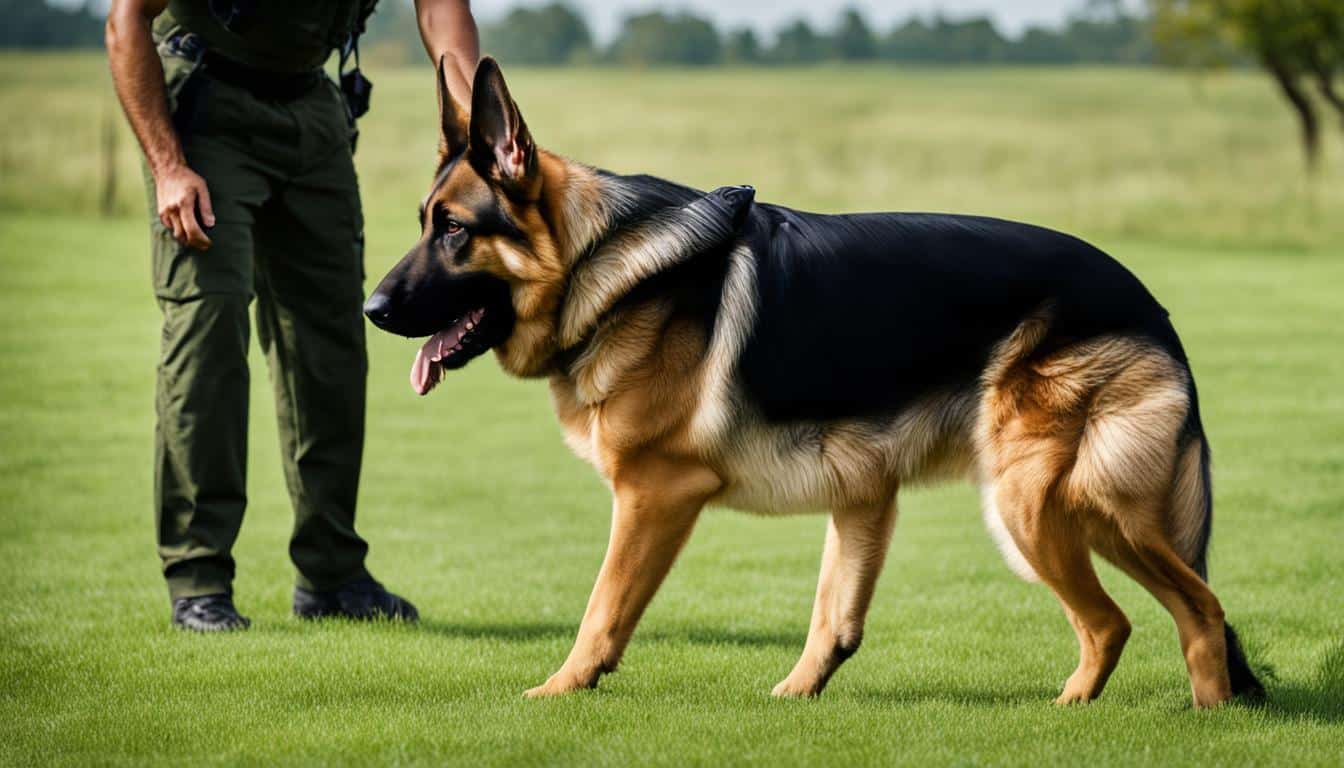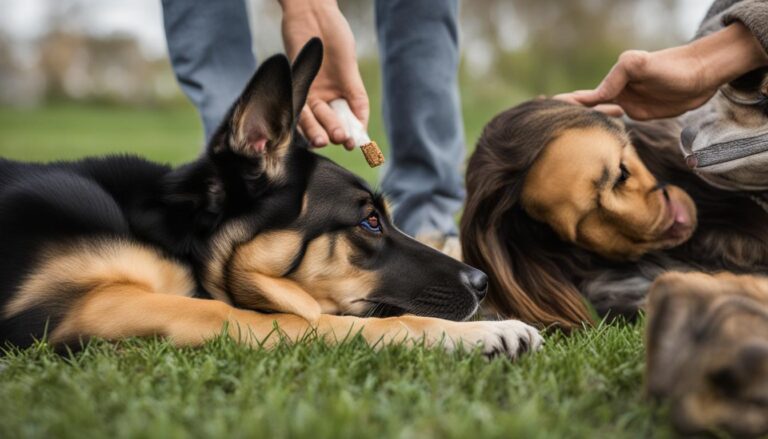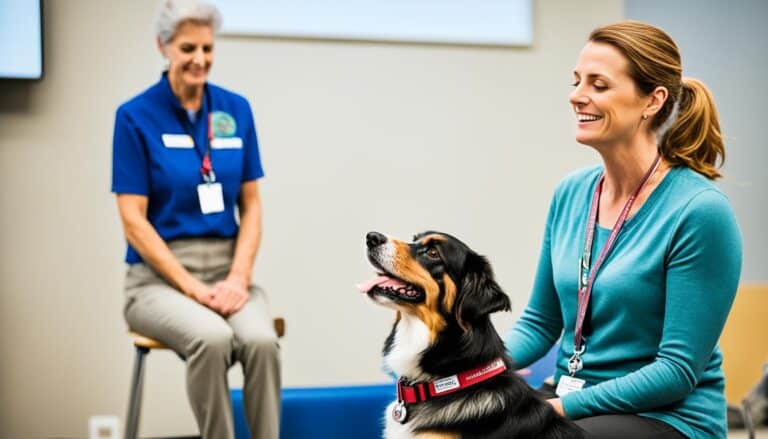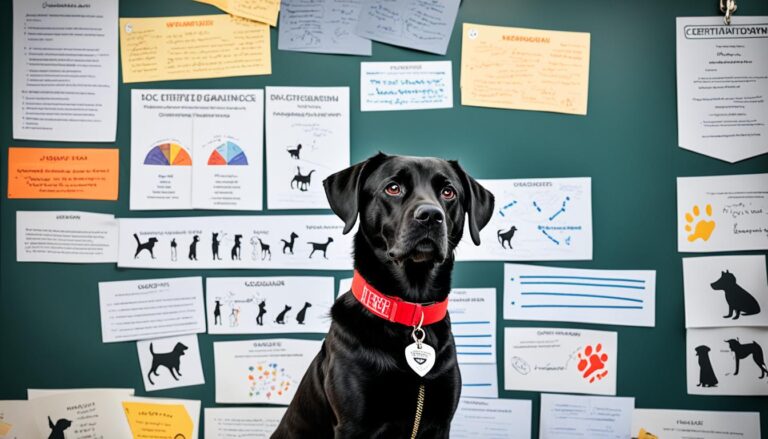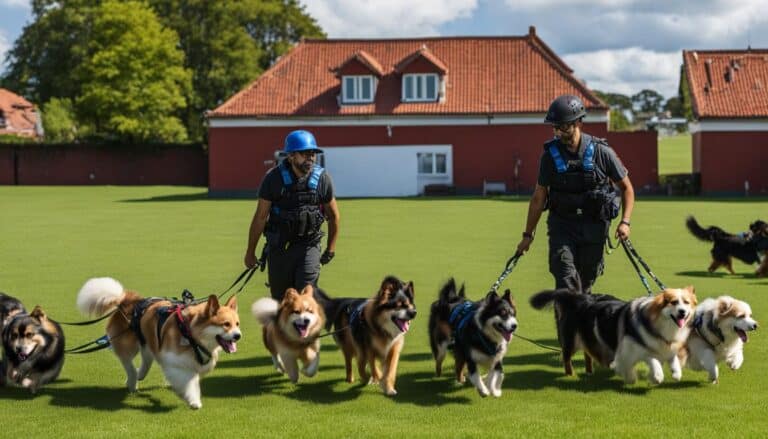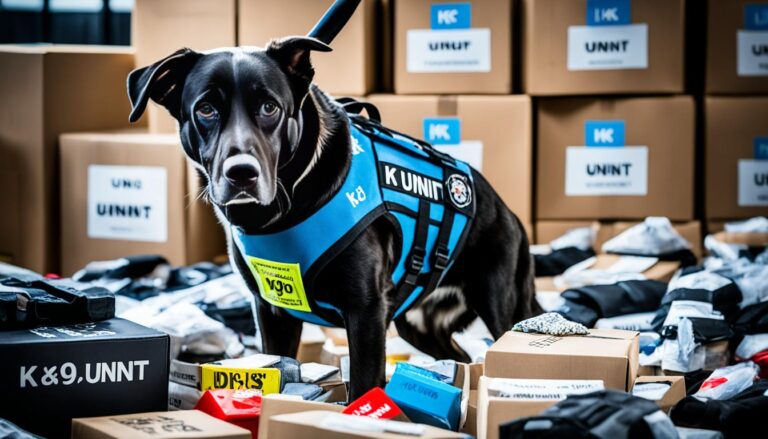How to Train a Protection Dog
Imagine the peace of mind that comes with knowing your beloved canine companion can effectively protect you and your family in any situation. Picture the confidence you would feel knowing that your four-legged friend has been trained to be a reliable protector, capable of defending you from potential threats.
Training a protection dog requires proper knowledge and techniques, but with the right methods, you can transform your dog into a trustworthy guardian. In this article, we will provide you with expert tips and strategies on how to train a protection dog effectively at home. Whether you’re starting from scratch or looking to enhance your dog’s existing skills, we’ve got you covered.
From understanding the difference between a guard dog and an attack dog, choosing the right breed, and socializing your dog to teaching basic obedience and advanced protection training techniques, we will guide you step-by-step through the process. By the end, you’ll have all the knowledge you need to turn your dog into a reliable protection companion.
So, let’s dive in and discover the best protection dog training methods, from the basics to the advanced, that will help you forge an unbreakable bond with your furry protector.
Recognize the Difference between a Guard Dog and an Attack Dog
Understanding the distinction between a guard dog and an attack dog is crucial when training a protection dog. While both have important roles in security, their training objectives and behaviors differ.
A guard dog is trained to alert its owner of the presence of a stranger or intruder through barking or growling. Their primary function is to act as a deterrent by signaling the presence of a potential threat. Guard dogs are not typically trained to attack on command or act overly aggressive towards a stranger.
On the other hand, an attack dog is commonly used by police and law enforcement agencies. These dogs are trained to attack on command and respond aggressively to potential threats or intruders. They undergo intensive training to develop advanced biting and defensive skills.
Recognizing the differences between a guard dog and an attack dog will help you set appropriate training goals for your protection dog. Depending on your specific needs and circumstances, you can focus on training your dog to become a strong deterrent through alert barking or pursue advanced training to develop protective and defensive capabilities.
Choose the Right Breed for Protection Training
When it comes to training a protection dog, selecting the right breed is crucial. While any dog has the potential to act as a deterrent to intruders, certain breeds are known for their exceptional guarding abilities. German Shepherds, Rottweilers, Doberman Pinschers, and Belgian Malinois are among the top choices for protection training.
These guard dog breeds possess a combination of intelligence, loyalty, and protective instincts, making them ideal for the task at hand. German Shepherds are renowned for their versatility and trainability, enabling them to excel in various roles such as police work and search and rescue. Rottweilers are known for their imposing presence and natural protective instinct, making them excellent guard dogs. Doberman Pinschers are highly intelligent, loyal, and fearless, making them valuable assets in protection training. Belgian Malinois, often used in military and police work, are known for their exceptional drive, endurance, and trainability.
However, it’s important to note that while breed plays a role, proper training and socialization are equally significant factors in a dog’s ability to function as an effective guard dog. Regardless of size or breed, training and socializing your dog from an early age are crucial to ensure their suitability and reliability as a protection dog.
To give you a visual representation, here’s an image of some of the most popular guard dog breeds:
Socialize Your Dog
Socializing your dog is a crucial part of training a protection dog. It involves exposing your dog to different environments, people, and animals from a young age to ensure they are comfortable and less likely to be aggressive towards strangers.
Start socializing your dog early on by introducing them to various people, including children, and other animals. Take your dog on regular walks, visits to the park, and expose them to new sights, sounds, and smells. This helps them become well-rounded and responsive to commands.
Socialization plays a vital role in shaping your dog’s behavior and temperament. It helps them develop confidence and adaptability, making them better suited for their role as a protection dog.
Benefits of Socialization:
- Ensures your dog is comfortable in different environments
- Reduces the likelihood of aggression towards strangers
- Helps develop good behavior around people and other animals
- Builds trust and a strong bond between you and your dog
Remember, socializing your dog should be an ongoing process throughout their life. It’s important to continue exposing them to new experiences and reinforcing positive behaviors. By incorporating socialization into your protection dog training, you are setting a solid foundation for their success as a loyal and well-behaved companion.
Teach Basic Obedience Commands
Basic obedience training is a fundamental aspect of training a protection dog. By teaching your dog commands like sit, stay, come, and heel, you establish control and foster a strong bond. Start with the sit command to establish a foundation of discipline.
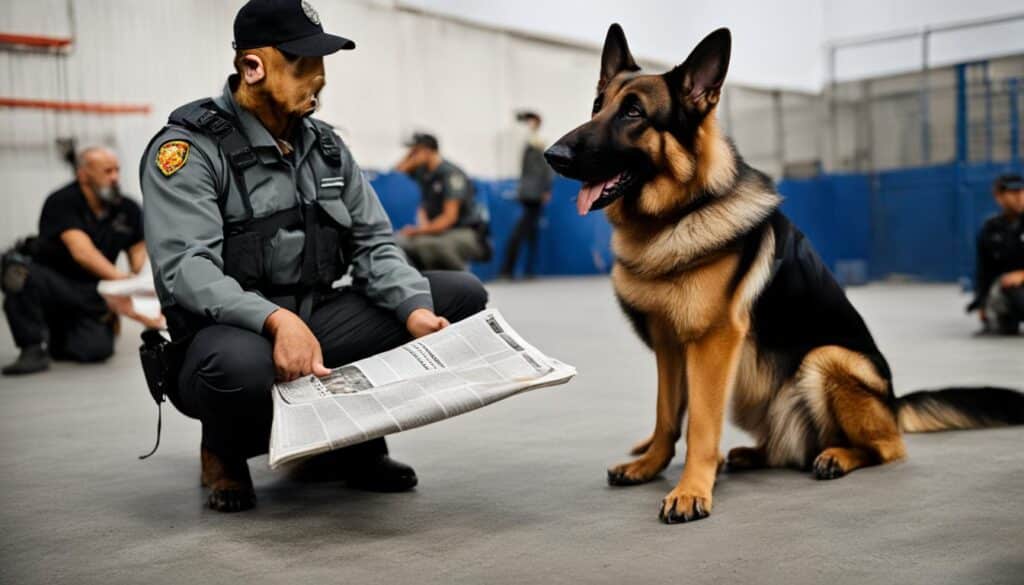
To teach the sit command, hold a treat above your dog’s head and say “sit.” As your dog sits, reward them with the treat and praise their good behavior. Repeat this process consistently until your dog understands and responds to the sit command reliably.
Once your dog has mastered the sit command, you can move on to teaching other basic obedience commands. The stay command teaches your dog to remain in one place until given further instruction. The come command encourages your dog to come to you when called. The heel command teaches your dog to walk calmly beside you without pulling or straying.
Consistency and positive reinforcement are key to successfully teaching these commands. Use treats, praise, and affection as rewards for your dog’s good behavior. Regular training sessions, filled with patience and encouragement, will help your dog understand and respond to these essential obedience commands.
Remember, basic obedience training lays the foundation for advanced protection training. By establishing a strong obedience base, you build trust, respect, and control, making your dog a reliable and disciplined protector.
Train Your Dog to Bark on Command
Guard dogs play a crucial role in providing security and protection. Training them to bark on command can enhance their effectiveness in alerting you to potential intruders and acting as a deterrent. Here’s a simple training technique to teach your dog to bark on command:
- Choose a command word, such as “speak,” that you will use consistently during training.
- When your dog naturally barks, immediately say the command word “speak” and reward them with a treat and praise.
- Repeat this process multiple times, associating the command word with the action of barking.
- Gradually introduce the command word without waiting for your dog to naturally bark. Say “speak” and encourage them to bark. Reward and praise them when they comply.
- Practice this training technique in various situations and gradually reduce the rewards, relying more on praise and positive reinforcement.
Remember, it’s important to strike a balance and not let your dog bark excessively, as it can lead to disturbances. Consistency and positive reinforcement are key to successful training in this aspect. With consistent practice, your dog will learn to bark on command, bolstering their alertness and protection capabilities.
Train Your Dog to Stop Barking on Command
While training your protection dog, it is equally crucial to teach them to stop barking on command. This command is essential for maintaining peace and minimizing disturbances in your home or surroundings. By training your dog to stop barking when commanded, you can have control over their behavior and create a calm environment.
To start training your dog to stop barking on command, choose a specific word or phrase such as “quiet” or “enough” that will serve as the command. Use this command consistently whenever your dog starts barking. As soon as your dog stops barking, reward them with praise, treats, or any positive reinforcement method that works best for them.
Consistency is key in this training method. Every time your dog barks excessively or unnecessarily, use the command word and reward them promptly when they stop. Over time, your dog will associate the command with the desired behavior of quieting down.
Be patient and persistent during the training process. Some dogs may take longer to understand and respond to the command, especially if they have a strong barking instinct. By consistently reinforcing the command and providing positive reinforcement, you can effectively train your dog to stop barking on command.
To ensure successful training, it is important to understand why your dog barks in the first place. Dogs may bark due to various reasons such as alerting to potential threats, boredom, anxiety, or seeking attention. Addressing the underlying cause of excessive barking, along with training to stop barking on command, can help you achieve the desired results.
Remember that training should always be done in a positive and humane manner. Never use punishment or harsh methods to stop your dog from barking, as this can lead to fear, anxiety, and aggression.
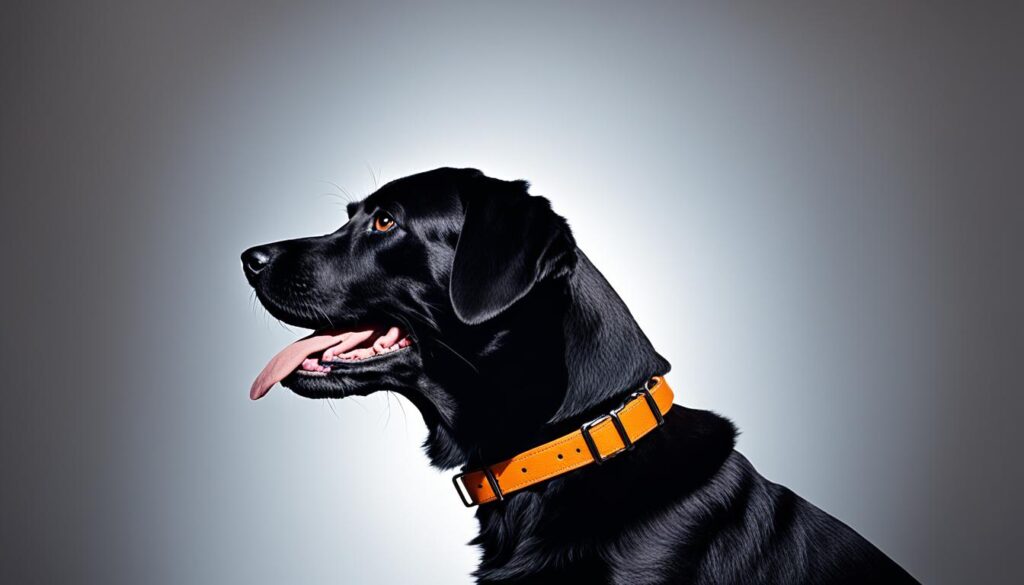
Introduce Your Dog to a Guard Command
Introducing your dog to a guard command is a crucial step in the training process to develop them into a reliable protection dog. By teaching your dog to associate a specific command word with guarding a particular area or person, you can ensure they understand their role and perform the necessary duties.
To start, choose a command word that is clear and concise, such as “guard” or “watch”. Use this command word when introducing your dog to the specific area or person you want them to guard. For example, if you want your dog to guard your property, use the command word while walking them around the boundaries of your property.
When your dog successfully follows the command and demonstrates the desired behavior, reward them with treats and praise. Consistency is key in reinforcing the guard command, so make sure to use the same command word each time you want your dog to guard.
Repetition is also crucial for reinforcing the behavior. Practice these commands regularly in different scenarios, gradually increasing the level of difficulty. This will help your dog generalize the command and respond reliably in various situations.
Remember to be patient and persistent during the training process. Each dog learns at their own pace, so it’s important to tailor the training techniques to your dog’s individual needs and abilities.
By introducing your dog to a guard command, you are equipping them with the skills necessary to protect specific areas or people. This training technique is an essential component of training a reliable protection dog, ensuring they can fulfill their role effectively.
Train Your Dog to Protect
Protection training is a critical aspect of training a guard dog but should only be done under the guidance of a professional trainer. This type of training involves teaching your dog to recognize potential threats and respond accordingly. A professional trainer will use positive reinforcement techniques and ensure the safety of both the dog and the handler during the training process. It’s important to understand that protection training is not something to be attempted by inexperienced owners and requires specialized knowledge and skills.
When training your dog to protect, a professional trainer will help you develop the necessary skills to recognize potential threats. This includes teaching your dog to pay attention to their surroundings and identify behaviors or situations that may indicate a threat. Through repetitive training exercises, your dog will learn to differentiate between harmless individuals and potential intruders.
In addition to recognizing potential threats, response training is another crucial aspect of protection training. Your dog will be trained to respond to commands that signal them to take appropriate action when faced with a threat. This may involve barking, growling, or physically intervening to deter the potential threat.
Benefits of Professional Trainer-
- A professional trainer has the expertise and experience to properly assess your dog’s temperament and capabilities.
- They can tailor the training program to meet your dog’s specific needs and goals.
- Professional trainers use positive reinforcement techniques, ensuring a safe and effective training process.
- They can provide guidance and support throughout the training journey, helping you overcome any challenges you may encounter.
Remember, protection training requires a high level of responsibility and commitment. It’s essential to prioritize the safety and well-being of both your dog and those around you. By working with a professional trainer, you can ensure that the training process is conducted in a controlled and safe environment.
Practice Regularly
Training a protection dog is an ongoing process that requires regular practice and reinforcement. To ensure your dog becomes a reliable protector, it’s important to set aside dedicated time each day for training sessions. During these sessions, focus on practicing obedience commands, guard commands, and protection training techniques.
Make the training sessions fun and enjoyable for your dog by incorporating play and rewards. This positive reinforcement will motivate them to perform obedience commands and learn new skills. Remember to be consistent in your training and provide frequent reinforcement to reinforce good behavior.
Consistency and regular practice will help maintain your dog’s skills and improve their behavior as a reliable protection dog. Aim to practice obedience commands such as “sit,” “stay,” and “heel” daily. Additionally, work on guard commands such as “watch” or “guard” to train your dog to protect specific areas or individuals.
By practicing regularly, you will reinforce your dog’s training and enhance their ability to respond effectively in various situations. These practice sessions will strengthen the bond between you and your dog and ensure that they are equipped to fulfill their role as a reliable protection dog.
Maintain a Strong Bond and Be a Responsible Owner
Building a strong bond with your dog is crucial when training a protection dog. Spending quality time with your furry friend and engaging in activities together not only strengthens your relationship but also enhances their trust and loyalty towards you. Consider taking them on regular walks, playing games, and providing mental and physical stimulation. This bond is the foundation for effective training and will contribute to a successful protection dog.
As a responsible owner, it’s your duty to ensure the health and well-being of your dog. Keep them up-to-date on vaccinations and schedule regular visits to the veterinarian. Proper nutrition, exercise, and grooming are also essential for their overall care. Additionally, maintain a safe and secure environment for your dog, both at home and in public places.
When out in public, always keep your dog on a leash to prevent any potential accidents or unwanted encounters. It’s important to teach your dog proper manners and socialization, ensuring they behave appropriately around people and other animals. Being a responsible owner not only keeps your dog safe but also promotes a positive image of protection dog owners in the community.
In conclusion, training a protection dog goes beyond teaching commands and techniques. It requires you to build a strong bond with your dog and take on the responsibilities of being a dedicated and caring owner. By investing time, effort, and love into your dog’s training and well-being, you can create a harmonious partnership and raise a reliable and well-behaved protection dog.
